Veterans...Get the hell in here now!
- Thread starter 6ohMax
- Start date
BarnBuster
Virtually Unknown Member

First Woman to Serve as Commanding Officer of USS Constitution in Ship’s 224-year History
BOSTON – USS Constitution’s first female commanding officer will take command of Old Ironsides during a change-of-command ceremony, scheduled for Friday, Jan. 21, at noon.
www.navy.mil
cannabineer
Ursus marijanus
“that’s a nasty discharge you have there”
raratt
Well-Known Member
I don't know if a general will get you one of those...“that’s a nasty discharge you have there”
Edit: they are issued for all discharges and include narratives outlining the offense/s.
Last edited:
If I remember correctly a General will convert to a Good Conduct in 6 months lacking extenuating circumstances.I don't know if a general will get you one of those...
Edit: they are issued for all discharges and include narratives outlining the offense/s.
At least that's the way it used to work.
BarnBuster
Virtually Unknown Member
Today in Military History:
On January 21, 1977, U.S. President Jimmy Carter grants an unconditional pardon to hundreds of thousands of men who evaded the draft during the Vietnam War.
In total, some 100,000 young Americans went abroad in the late 1960s and early '70s to avoid serving in the war. Ninety percent went to Canada, where after some initial controversy they were eventually welcomed as immigrants. Still others hid inside the United States. In addition to those who avoided the draft, a relatively small number—about 1,000—of deserters from the U.S. armed forces also headed to Canada. While the Canadian government technically reserved the right to prosecute deserters, in practice they left them alone, even instructing border guards not to ask too many questions.
For its part, the U.S. government continued to prosecute draft evaders after the Vietnam War ended. A total of 209,517 men were formally accused of violating draft laws, while government officials estimate another 360,000 were never formally accused. If they returned home, those living in Canada or elsewhere faced prison sentences or forced military service. During his 1976 presidential campaign, Jimmy Carter promised to pardon draft dodgers as a way of putting the war and the bitter divisions it caused firmly in the past. After winning the election, Carter wasted no time in making good on his word. Though many transplanted Americans returned home, an estimated 50,000 settled permanently in Canada.
Back in the U.S., Carter’s decision generated a good deal of controversy. Heavily criticized by veterans’ groups and others for allowing unpatriotic lawbreakers to get off scot-free, the pardon and companion relief plan came under fire from amnesty groups for not addressing deserters, soldiers who were dishonorably discharged or civilian anti-war demonstrators who had been prosecuted for their resistance.
Years later, Vietnam-era draft evasion still carries a powerful stigma. Though no prominent political figures have been found to have broken any draft laws, Presidents Bill Clinton and George W. Bush and Vice Presidents Dan Quayle and Dick Cheney—none of whom saw combat in Vietnam—have all been accused of being draft dodgers at one time or another. Donald Trump received five draft deferments during the Vietnam War, once for bone spurs in his heels. Although there is not currently a draft in the U.S., desertion and conscientious objection have remained pressing issues among the armed forces during the recent wars in Afghanistan and Iraq.

 www.nytimes.com
www.nytimes.com
On January 21, 1977, U.S. President Jimmy Carter grants an unconditional pardon to hundreds of thousands of men who evaded the draft during the Vietnam War.
In total, some 100,000 young Americans went abroad in the late 1960s and early '70s to avoid serving in the war. Ninety percent went to Canada, where after some initial controversy they were eventually welcomed as immigrants. Still others hid inside the United States. In addition to those who avoided the draft, a relatively small number—about 1,000—of deserters from the U.S. armed forces also headed to Canada. While the Canadian government technically reserved the right to prosecute deserters, in practice they left them alone, even instructing border guards not to ask too many questions.
For its part, the U.S. government continued to prosecute draft evaders after the Vietnam War ended. A total of 209,517 men were formally accused of violating draft laws, while government officials estimate another 360,000 were never formally accused. If they returned home, those living in Canada or elsewhere faced prison sentences or forced military service. During his 1976 presidential campaign, Jimmy Carter promised to pardon draft dodgers as a way of putting the war and the bitter divisions it caused firmly in the past. After winning the election, Carter wasted no time in making good on his word. Though many transplanted Americans returned home, an estimated 50,000 settled permanently in Canada.
Back in the U.S., Carter’s decision generated a good deal of controversy. Heavily criticized by veterans’ groups and others for allowing unpatriotic lawbreakers to get off scot-free, the pardon and companion relief plan came under fire from amnesty groups for not addressing deserters, soldiers who were dishonorably discharged or civilian anti-war demonstrators who had been prosecuted for their resistance.
Years later, Vietnam-era draft evasion still carries a powerful stigma. Though no prominent political figures have been found to have broken any draft laws, Presidents Bill Clinton and George W. Bush and Vice Presidents Dan Quayle and Dick Cheney—none of whom saw combat in Vietnam—have all been accused of being draft dodgers at one time or another. Donald Trump received five draft deferments during the Vietnam War, once for bone spurs in his heels. Although there is not currently a draft in the U.S., desertion and conscientious objection have remained pressing issues among the armed forces during the recent wars in Afghanistan and Iraq.
10,000 AFFECTED NOW (Published 1977)
Pres Carter pardons almost all evaders; vows to initiate immediate study of those who deserted with view to upgrading less‐than‐honorable discharges; move affects estimated 10,000; draws protests from veterans orgns and conservative pols; is mildly praised by pro‐amnesty groups; Reprs Koch and...
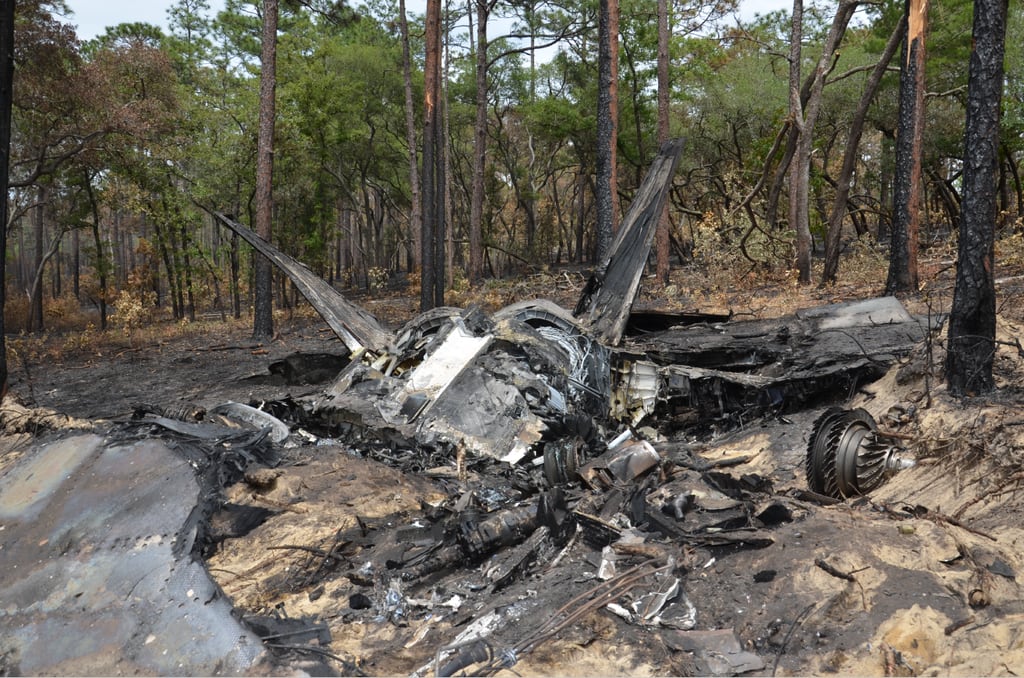
Human error, tech glitches and tape caused May 2020 F-22 crash
The Air Force declined to say whether anyone was disciplined for the incident.
BarnBuster
Virtually Unknown Member

Air Force Col. Meredith Seeley walks alongside an Afghan evacuee at Holloman Air Force Base, N.M., Jan 13, 2022. Photo By: Army Pfc. Anthony Sanchez

Air Force Col. Meredith Seeley, Task Force Holloman vice commander, plays with Afghan evacuees at Aman Omid Village on Holloman Air Force Base, N.M., Jan 13, 2022. Photo By: Army Pfc. Anthony Sanchez
BarnBuster
Virtually Unknown Member
Today in Military History:
The Battle of Rorke’s Drift took place in South Africa on this day and is remembered as one of the world’s most remarkable military engagements.
Britain was intent on expanding its territory and influence in South Africa in the 1870s and had declared war on the Kingdom of Zululand. Rorke’s Drift was a mission station near the border between the British colony of Natal and the Zulu Kingdom and had been occupied by British troops. When the battle began, though, only 139 soldiers were encamped there. They had no idea what lay in store.
At 4.20pm on January 22, 1879 a force of 4,000 Zulu warriors began to lay siege to the station. Their intermittent attacks were to last for almost twelve hours.
Fortunately for the British, although some of the Zulus had old muskets and antiquated rifles, most were armed only with a short spear called an assegai and a shield made of cowhide. So in weaponry they were no match for the highly trained soldiers with their (then) sophisticated rifles and firepower. But the manpower advantage lay massively in favour of the Zulus.
By 4am, after nearly 12 hours repulsing wave after wave of attacks involving hand-to-hand combat, a number of British soldiers lay dead. Most of the others were exhausted, rapidly running out of ammunition, and probably in no condition to repel another assault. But they didn’t have to. As dawn broke they saw that the Zulus were gone, leaving behind a battleground littered with the dead and dying. Zulu casualties were around 500, while the British sustained 17 dead and 10 wounded.
The Victoria Cross is Britain’s highest medal for bravery. Eleven were awarded to the defenders of Rorke's Drift – the most ever received in a single action by one regiment.
According to American military historian Victor Davis Hanson: “In the long annals of military history it is difficult to find anything quite like Rorke's Drift, where a beleaguered force, outnumbered forty to one, survived and killed twenty men for every defender lost.”
Sir Garnet Wolseley, taking over as Commander-in-Chief from Lord Chelmsford, was unimpressed with the awards made to the defenders of Rorke’s Drift, saying ‘it is monstrous making heroes of those who shut up in buildings at Rorke’s Drift, could not bolt, and fought like rats for their lives which they could not otherwise save.’
The medical consequences of the battle: It seems likely that a number of the defenders of Rorke’s Drift subsequently suffered from what is now classified as Post Traumatic Stress Disorder: Corporal Schiess ‘fell on hard times’ and died in 1884 aged 28 years; Private John Fielding’s hair is said to have turned white shortly after the battle; William Jones, in old age, suffered from nightmares that the Zulus were about to attack; Robert Jones shot himself in 1896.
The Battle of Rorke’s Drift took place in South Africa on this day and is remembered as one of the world’s most remarkable military engagements.
Britain was intent on expanding its territory and influence in South Africa in the 1870s and had declared war on the Kingdom of Zululand. Rorke’s Drift was a mission station near the border between the British colony of Natal and the Zulu Kingdom and had been occupied by British troops. When the battle began, though, only 139 soldiers were encamped there. They had no idea what lay in store.
At 4.20pm on January 22, 1879 a force of 4,000 Zulu warriors began to lay siege to the station. Their intermittent attacks were to last for almost twelve hours.
Fortunately for the British, although some of the Zulus had old muskets and antiquated rifles, most were armed only with a short spear called an assegai and a shield made of cowhide. So in weaponry they were no match for the highly trained soldiers with their (then) sophisticated rifles and firepower. But the manpower advantage lay massively in favour of the Zulus.
By 4am, after nearly 12 hours repulsing wave after wave of attacks involving hand-to-hand combat, a number of British soldiers lay dead. Most of the others were exhausted, rapidly running out of ammunition, and probably in no condition to repel another assault. But they didn’t have to. As dawn broke they saw that the Zulus were gone, leaving behind a battleground littered with the dead and dying. Zulu casualties were around 500, while the British sustained 17 dead and 10 wounded.
The Victoria Cross is Britain’s highest medal for bravery. Eleven were awarded to the defenders of Rorke's Drift – the most ever received in a single action by one regiment.
According to American military historian Victor Davis Hanson: “In the long annals of military history it is difficult to find anything quite like Rorke's Drift, where a beleaguered force, outnumbered forty to one, survived and killed twenty men for every defender lost.”
Sir Garnet Wolseley, taking over as Commander-in-Chief from Lord Chelmsford, was unimpressed with the awards made to the defenders of Rorke’s Drift, saying ‘it is monstrous making heroes of those who shut up in buildings at Rorke’s Drift, could not bolt, and fought like rats for their lives which they could not otherwise save.’
The medical consequences of the battle: It seems likely that a number of the defenders of Rorke’s Drift subsequently suffered from what is now classified as Post Traumatic Stress Disorder: Corporal Schiess ‘fell on hard times’ and died in 1884 aged 28 years; Private John Fielding’s hair is said to have turned white shortly after the battle; William Jones, in old age, suffered from nightmares that the Zulus were about to attack; Robert Jones shot himself in 1896.
Last edited:
BarnBuster
Virtually Unknown Member
Today in Military History:
The Marias Massacre is a little-known one-sided incident that took place in Montana on January 23, 1870. Though receiving little attention in history, the massacre, which killed some 200 Piegan Indians, mostly women and children, was described by one company commander as “the greatest slaughter of Indians ever made by U.S. troops.”
Before this event, relations between the Blackfoot Confederacy comprised the Blackfoot, Blood, and Piegan tribes, and the white settlers had been hostile for several years. Amidst low-level hostilities in 1869, a young warrior named Owl Child stole several horses from Malcolm Clarke, a white trader. Afterward, Clarke tracked down Owl Child and beat him in front of his camp for the offense. Humiliated, Owl Child, with a band of rogue Piegans, sought revenge and killed Clarke.
The killing inflamed the public, which caused General Philip Sheridan to send out a band of cavalry led by Major Eugene Baker to track down and punish the offending party.
On January 23, 1870, the cavalry received a scouting report that the Piegan, led by Mountain Chief, was camped along the Marias River. At first light, 200 dismounted U.S. cavalrymen lay spread out in an ambush position along the snowy bluffs overlooking the Marias River. As they awaited the command to fire, the chief of the camp came out of his lodge, walking toward the bluffs waving a safe-conduct paper. It was not Mountain Chief, who had been forewarned and had already left the area. Rather, it was Piegan leader Heavy Runner, who had enjoyed friendly relations with the white men. When an Army scout by the name of Joe Kipp shouted that this was the wrong camp, he was threatened into silence. Another scout, Joe Cobell, then fired the first shot, killing Heavy Runner and the massacre ensued.
In those early morning hours, the Indian camp was unprotected as most men were out hunting. Bullets riddled the lodges, collapsing some into smoking fire pits and suffocating the half-awake victims. When the carnage was over, 173 lay dead – mostly women, children, and the elderly. 140 others were captured, later to be turned loose without horses, adequate food, and clothing. As the refugees made their way to Fort Benton, some 90 miles away, many of them froze to death.
In the meantime, Major Eugene Baker led his troops downstream to find the real target designated clearly in his orders. However, by the time they arrived, Mountain Chief and his band had fled to safety in nearby Canadian territory.
Only one cavalryman died in the massacre after falling off his horse and breaking his leg. Lieutenant Gus Doane, commander of F Company, described the massacre as “the greatest slaughter of Indians ever made by U.S. troops.”
Afterward, there was a brief storm of outraged protest in Congress and in the eastern press. However, General William Sherman deflected a public inquiry by silencing the protests of General Alfred Sully, the Bureau of Indian Affairs superintendent of Montana Indians, and Lieutenant William Pease, the Piegan Indian Agent who had reported the damning body-count. Sherman responded by issuing a press release denying any military guilt and insisting that most of the dead Piegans were warriors in Mountain Chief’s camp.
Many blamed Major Baker, a known alcoholic, for the massacre and failure to capture Mountain Chief’s men. However, in the subsequent controversy, General Sheridan expressed his confidence in Baker’s leadership. Between Sheridan and Sherman’s statements, an official investigation into the incident never occurred.
Though the incident was every bit as significant as many others, such as the Bear River, Sand Creek, and Washita Massacres, history has overlooked this incident, with little mention of the event in the books and journals of the past. No sign or monument marks the site of the mass grave of the Piegan victims.
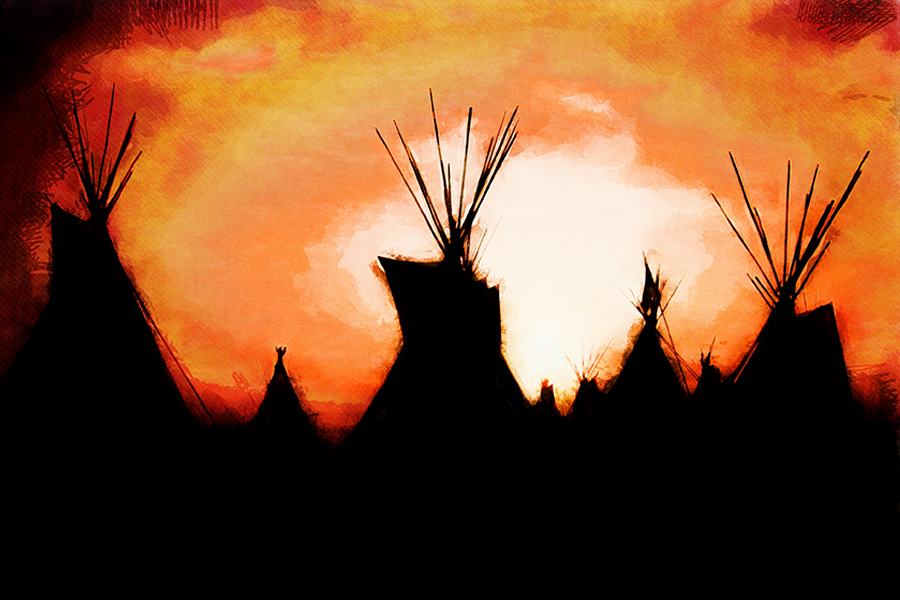
The Marias Massacre is a little-known one-sided incident that took place in Montana on January 23, 1870. Though receiving little attention in history, the massacre, which killed some 200 Piegan Indians, mostly women and children, was described by one company commander as “the greatest slaughter of Indians ever made by U.S. troops.”
Before this event, relations between the Blackfoot Confederacy comprised the Blackfoot, Blood, and Piegan tribes, and the white settlers had been hostile for several years. Amidst low-level hostilities in 1869, a young warrior named Owl Child stole several horses from Malcolm Clarke, a white trader. Afterward, Clarke tracked down Owl Child and beat him in front of his camp for the offense. Humiliated, Owl Child, with a band of rogue Piegans, sought revenge and killed Clarke.
The killing inflamed the public, which caused General Philip Sheridan to send out a band of cavalry led by Major Eugene Baker to track down and punish the offending party.
On January 23, 1870, the cavalry received a scouting report that the Piegan, led by Mountain Chief, was camped along the Marias River. At first light, 200 dismounted U.S. cavalrymen lay spread out in an ambush position along the snowy bluffs overlooking the Marias River. As they awaited the command to fire, the chief of the camp came out of his lodge, walking toward the bluffs waving a safe-conduct paper. It was not Mountain Chief, who had been forewarned and had already left the area. Rather, it was Piegan leader Heavy Runner, who had enjoyed friendly relations with the white men. When an Army scout by the name of Joe Kipp shouted that this was the wrong camp, he was threatened into silence. Another scout, Joe Cobell, then fired the first shot, killing Heavy Runner and the massacre ensued.
In those early morning hours, the Indian camp was unprotected as most men were out hunting. Bullets riddled the lodges, collapsing some into smoking fire pits and suffocating the half-awake victims. When the carnage was over, 173 lay dead – mostly women, children, and the elderly. 140 others were captured, later to be turned loose without horses, adequate food, and clothing. As the refugees made their way to Fort Benton, some 90 miles away, many of them froze to death.
In the meantime, Major Eugene Baker led his troops downstream to find the real target designated clearly in his orders. However, by the time they arrived, Mountain Chief and his band had fled to safety in nearby Canadian territory.
Only one cavalryman died in the massacre after falling off his horse and breaking his leg. Lieutenant Gus Doane, commander of F Company, described the massacre as “the greatest slaughter of Indians ever made by U.S. troops.”
Afterward, there was a brief storm of outraged protest in Congress and in the eastern press. However, General William Sherman deflected a public inquiry by silencing the protests of General Alfred Sully, the Bureau of Indian Affairs superintendent of Montana Indians, and Lieutenant William Pease, the Piegan Indian Agent who had reported the damning body-count. Sherman responded by issuing a press release denying any military guilt and insisting that most of the dead Piegans were warriors in Mountain Chief’s camp.
Many blamed Major Baker, a known alcoholic, for the massacre and failure to capture Mountain Chief’s men. However, in the subsequent controversy, General Sheridan expressed his confidence in Baker’s leadership. Between Sheridan and Sherman’s statements, an official investigation into the incident never occurred.
Though the incident was every bit as significant as many others, such as the Bear River, Sand Creek, and Washita Massacres, history has overlooked this incident, with little mention of the event in the books and journals of the past. No sign or monument marks the site of the mass grave of the Piegan victims.
Remembering the Marias Massacre - Flathead Beacon
For more than two decades, John Murray always knew where he’d be on the morning of Jan. 23, pressing himself against a wind-swept foothill or a snow-marbled bluff overlooking the Marias River, contemplating a history he’d rather forget — or, at least, one he’d rather not have to remember. Some...
flatheadbeacon.com
BarnBuster
Virtually Unknown Member
After 28 years of hiding in the jungles of Guam, local farmers discover Shoichi Yokoi on January 24, 1972, a Japanese sergeant who fought in World War II.
Guam, a 200-square-mile island in the western Pacific, became a U.S. possession in 1898 after the Spanish-American War. In 1941, the Japanese attacked and captured it, and in 1944, after three years of Japanese occupation, U.S. forces retook Guam. It was at this time that Yokoi, left behind by the retreating Japanese forces, went into hiding rather than surrender to the Americans. In the jungles of Guam, he carved survival tools and for the next three decades waited for the return of the Japanese and his next orders.
After he was discovered in 1972, he was finally discharged and sent home to Japan, where he was hailed as a national hero. He subsequently married and returned to Guam for his honeymoon. His handcrafted survival tools and threadbare uniform are on display in the Guam Museum in Agana.
The story is pretty interesting:
WWII: Sgt. Shoichi Yokoi, Last Straggler on Guam - Guampedia
Hid in Guam jungles. Shoichi Yokoi (1915 - 1997) was a sergeant in the Imperial Japanese Army, stationed on Guam during the Japanese Occupation of the island during World War II (December 1941- July 1944).
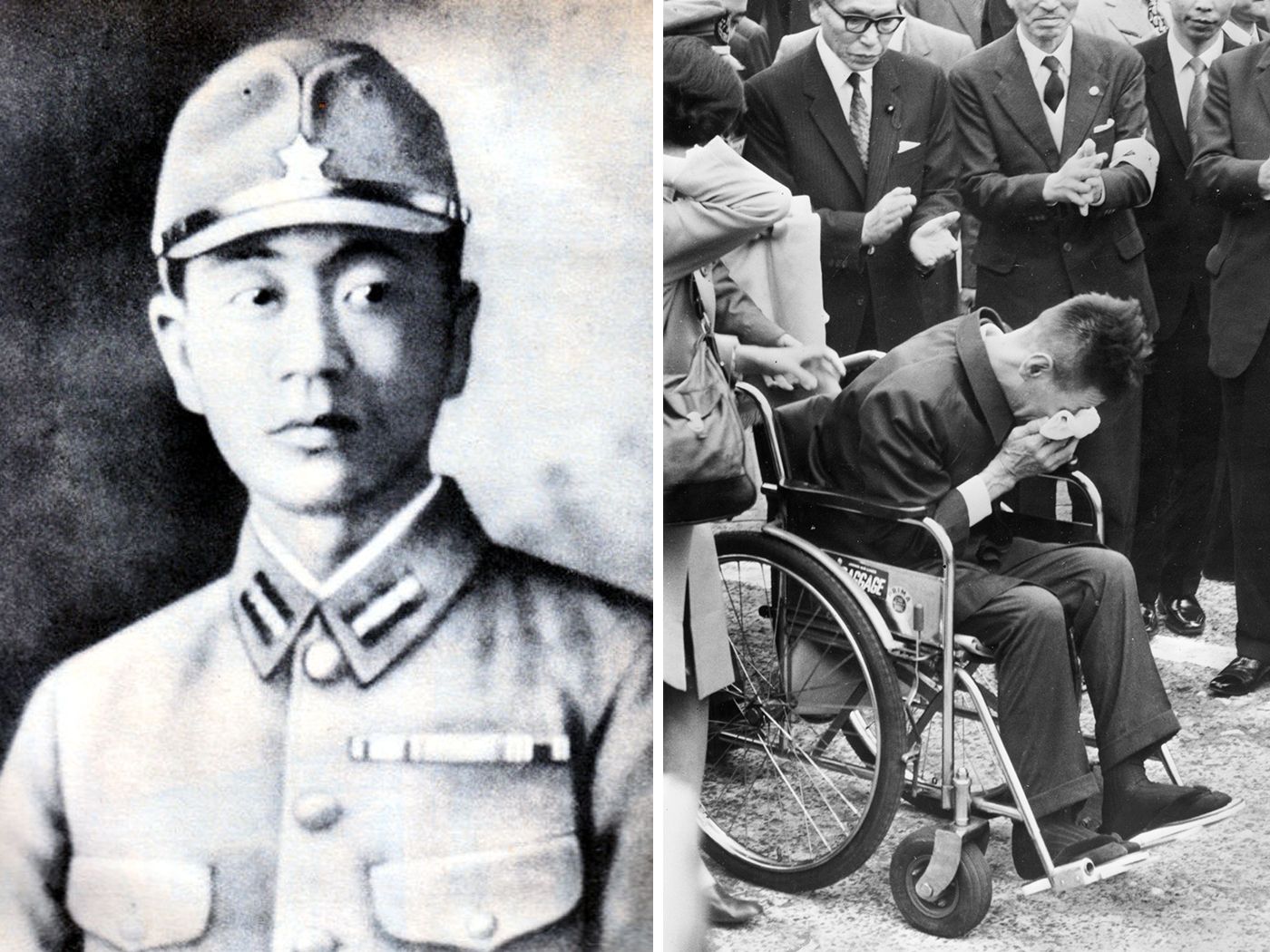
The Japanese WWII Soldier Who Refused to Surrender for 27 Years
Unable to bear the shame of being captured as a prisoner of war, Shoichi Yokoi hid in the jungles of Guam until January 1972

Shoichi Yokoi, the Japanese soldier who held out in Guam
The story of Shoichi Yokoi, the Japanese soldier who spent nearly three decades hiding in the jungles of Guam after the end of World War II.
www.bbc.com
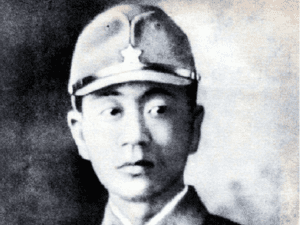
WWII Japanese Soldier Surrenders 27 Years after War’s End!
An article about Japanese Sergeant Shoichi Yokoi, who finally surrendered on Guam on 24 January 1972 – nearly 27 years after WWII had ended.
BarnBuster
Virtually Unknown Member
Every year since 2002, the Simon Wiesenthal Center publishes this report on the progress various countries have or have not made on the
investigation and prosecution of Nazi war criminals. I put an older report in here to cover the dates back thru 2002.
Worldwide Investigation and Prosecution of Nazi War Criminals 2020
Worldwide Investigation and Prosecution of Nazi War Criminals 2009-2010
investigation and prosecution of Nazi war criminals. I put an older report in here to cover the dates back thru 2002.
Worldwide Investigation and Prosecution of Nazi War Criminals 2020
Worldwide Investigation and Prosecution of Nazi War Criminals 2009-2010
I remember that.
After 28 years of hiding in the jungles of Guam, local farmers discover Shoichi Yokoi on January 24, 1972, a Japanese sergeant who fought in World War II.
Guam, a 200-square-mile island in the western Pacific, became a U.S. possession in 1898 after the Spanish-American War. In 1941, the Japanese attacked and captured it, and in 1944, after three years of Japanese occupation, U.S. forces retook Guam. It was at this time that Yokoi, left behind by the retreating Japanese forces, went into hiding rather than surrender to the Americans. In the jungles of Guam, he carved survival tools and for the next three decades waited for the return of the Japanese and his next orders.
After he was discovered in 1972, he was finally discharged and sent home to Japan, where he was hailed as a national hero. He subsequently married and returned to Guam for his honeymoon. His handcrafted survival tools and threadbare uniform are on display in the Guam Museum in Agana.
The story is pretty interesting:
WWII: Sgt. Shoichi Yokoi, Last Straggler on Guam - Guampedia
Hid in Guam jungles. Shoichi Yokoi (1915 - 1997) was a sergeant in the Imperial Japanese Army, stationed on Guam during the Japanese Occupation of the island during World War II (December 1941- July 1944).www.guampedia.com

The Japanese WWII Soldier Who Refused to Surrender for 27 Years
Unable to bear the shame of being captured as a prisoner of war, Shoichi Yokoi hid in the jungles of Guam until January 1972www.smithsonianmag.com

Shoichi Yokoi, the Japanese soldier who held out in Guam
The story of Shoichi Yokoi, the Japanese soldier who spent nearly three decades hiding in the jungles of Guam after the end of World War II.www.bbc.com
WWII Japanese Soldier Surrenders 27 Years after War’s End!
An article about Japanese Sergeant Shoichi Yokoi, who finally surrendered on Guam on 24 January 1972 – nearly 27 years after WWII had ended.blog.genealogybank.com
BarnBuster
Virtually Unknown Member
There were actually many sightings of holdouts (many disproved)I remember that.
BarnBuster
Virtually Unknown Member
January 26, 1970, U.S. Navy Lt. Everett Alvarez Jr. spends his 2,000th day in captivity in Southeast Asia. First taken prisoner when his plane was shot down on August 5, 1964. Alvarez was downed over Hon Gai during the first bombing raids against North Vietnam in retaliation for the disputed attack on U.S. destroyers in the Gulf of Tonkin in August 1964. Alvarez was the first U.S. pilot to be shot down and detained during the Vietnam War and spent over eight years in captivity, making him the second longest-held U.S. POW, after U.S. Army Colonel Floyd James Thompson.
Alvarez was released in 1973 after spending over eight years in captivity, the first six months as the only American prisoner in North Vietnam. From the first day of his captivity, he was shackled, isolated, nearly starved, and brutally tortured. Although he was among the more junior-rank prisoners of war, his courageous conduct under horrendous conditions and treatment helped establish the model emulated by the many other POWs that later joined him. After retirement from the Navy, he served as deputy director of the Peace Corps and deputy administrator of the Veterans Administration during the Reagan administration, before founding his own military consulting firm. The Lone Sailor Award was given to Alvarez in Washington, D.C. on September 18, 2012. This award is given to sea service veterans who have excelled with distinction in their respective civilian careers while exemplifying the U.S. Navy's stated core values of honor, courage and commitment. In March 2014, Alvarez was appointed to the Vietnam War Commemoration Advisory Council by the U.S. Secretary of Defense, Chuck Hagel.
BarnBuster
Virtually Unknown Member
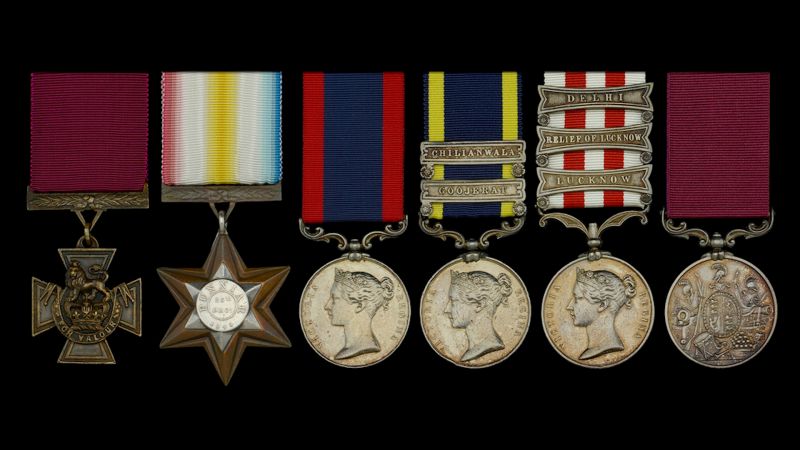
Lifesaving private's 1857 Victoria Cross medals group sells at auction
The group of six medals had not been sold on the open market for more than 100 years and sold for £40,000 above top estimate.
(The Victoria Cross [Great Britain's Medal of Honor] can be bought and sold unlike our MOH which under Federal law, cannot be sold or traded.
Since its inception in 1856, there have been 1,358 VCs awarded. 3,473 Medals of Honor have been awarded since it's inception in 1863.)
BarnBuster
Virtually Unknown Member


(Prisoner examined by Soviet Dr on left, gas chamber photo on right. The marks are what you think they are)
On January 27, 1945, Soviet troops enter Auschwitz, Poland, freeing the survivors of the network of concentration camps—and finally revealing to the world the depth of the horrors perpetrated there.
Auschwitz was really a group of camps, designated I, II, and III. There were also 40 smaller “satellite” camps. It was at Auschwitz II, at Birkenau, established in October 1941, that the SS created a complex, monstrously orchestrated killing ground: 300 prison barracks; four “bathhouses” in which prisoners were gassed; corpse cellars; and cremating ovens. Thousands of prisoners were also used for medical experiments overseen and performed by the camp doctor, Josef Mengele, the “Angel of Death.”
The Red Army had been advancing deeper into Poland since mid-January. Having liberated Warsaw and Krakow, Soviet troops headed for Auschwitz. In anticipation of the Soviet arrival, the German Gestapo began a murder spree in the camps, shooting sick prisoners and blowing up crematoria in a desperate attempt to destroy the evidence of their crimes. When the Red Army finally broke through, Soviet soldiers encountered 648 corpses and more than 7,000 starving camp survivors. There were also six storehouses filled with hundreds of thousands of women’s dresses, men's suits and shoes that the Germans did not have time to burn.

Auschwitz Photos
Sometimes thousands of words can not replace the picture. After watching these Auschwitz pictures you will truly understand, how important is this place for our history. Photos below are only a small part of what happened there, but will give you almost full picture of Auschwitz Concentration...
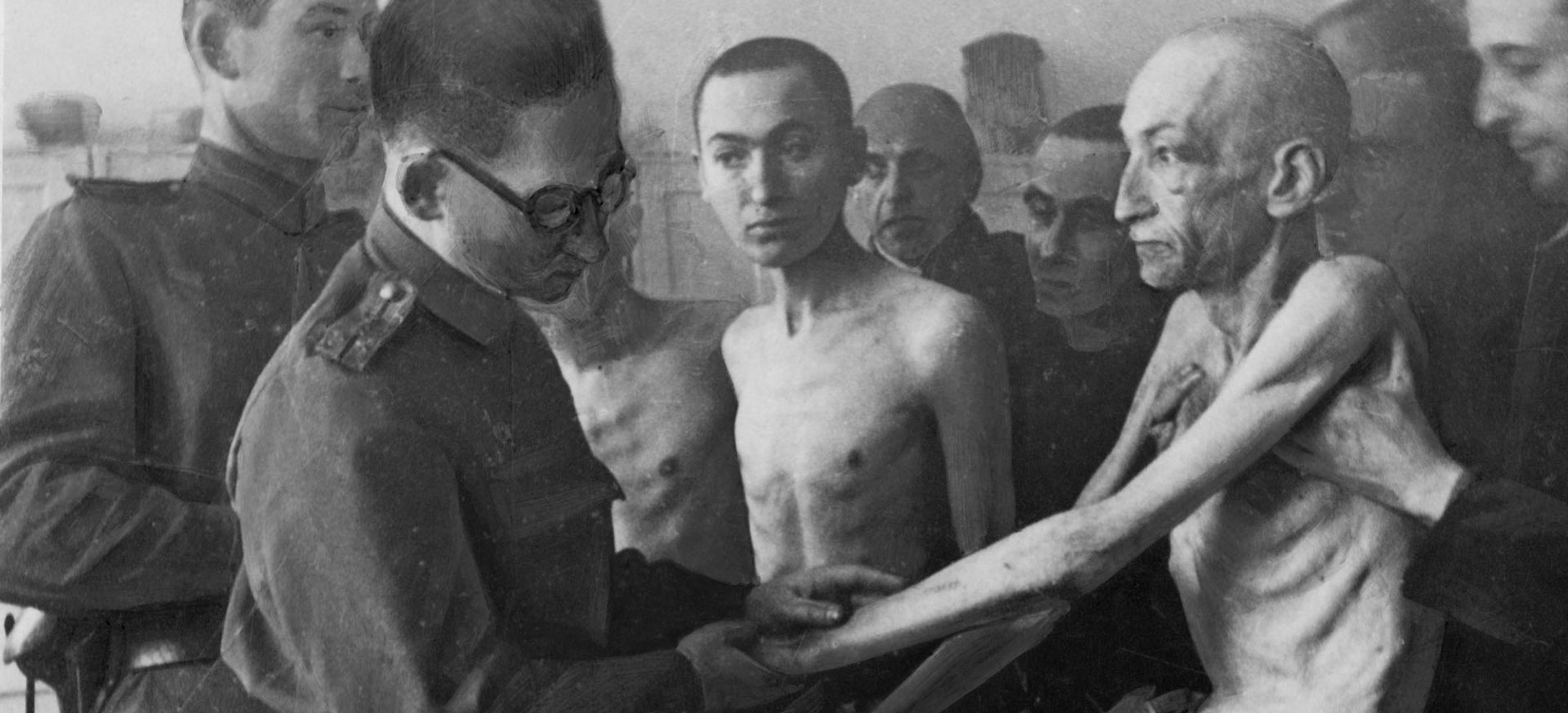
The Shocking Liberation of Auschwitz: Soviets ‘Knew Nothing’ as They Approached | HISTORY
While some had been driven from the camp, thousands of emaciated prisoners had been left behind to die.
Collections Search - United States Holocaust Memorial Museum Search Results
(Below is a 20 min film clip of the liberation taken by the Soviets. They shot thousands of feet of film during the various camp liberations. Virtually none of it has been digitized or is available for viewing outside of Russia.)
Collections Search - United States Holocaust Memorial Museum
Last edited:











